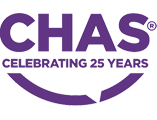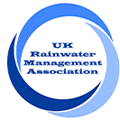Why sustainable water supplies are a MUST in 2023
10/06/2023
The construction of new homes and commercial property is occurring at a rapid rate as the population continues to grow. The problem is that most of these new developments use the same method to supply water as the Victorian times. A single, potable water supply is connected into the property, and the potable water supply is used throughout the building for all water usage requirements, even toilet flushing!
This is not a sustainable way to use water in a building in the 21st century and there are alternatives available. Rainwater Harvesting and Greywater Recycling are tried and tested technologies which reuse water locally within the building and provide a sustainable water for non-potable use.
Although many think that the UK is a water-rich country, this is simply not the case! The Environment Agency recently announced that the country will require an extra 4 billion litres of additional water per day to cope with increased demand in the future. But, as we have seen, the future is already here with regions experiencing frequent hosepipe bans and usage restrictions during warm weather.

Reduced demand - Separating the supplies within a building into potable water and sustainable water supply can help reduce pressure on traditional infrastructure. Sustainable water supplies can be used for toilet flushing, irrigation, vehicle washing and laundry, allowing for potable water supplies to be saved for drinking, sanitation, and bathing. Non-potable water usage does not require the same level of filtration as traditional potable water supplies; therefore, does not need to be transported to a large treatment plant many miles away and then re-distributed back into the property for use.
Reduced flood risk – Rainwater Harvesting captures storm water run off from a building’s roof area for reuse within the building. This alleviates pressure on the drainage network during a heavy storm. Traditionally, this rainwater would be sent straight into the traditional drainage network for treatment or a combined sewer release into rivers and seas. Greywater Recycling reuses water supplies within the building and can also reduce the volume of water entering the drainage network.
Reduced Carbon – Rainwater Harvesting eliminates the need for complex filtration and many miles of transportation. By managing water run off locally, Rainwater Harvesting is proven to reduce carbon emissions when compared to mains water supplies. Work is still underway by Stormsaver to calculate the carbon footprint of Greywater Recycling Systems over their lifetime when compared mains water production.
Of course, installing a sustainable water supply will require to networks of pipework within a property. One network will be needed for mains water and the other for sustainable water. It is much easier and cost-effective to install dual pipework for water during the construction process; therefore, this needs to become a standard practice within the construction industry moving forward.
Pipework which supplies a sustainable water supply should be clearly labelled as non-potable in accordance with WRAS regulations.
Our team have 20 years’ experience within the water reuse sector. We maintain all types of rainwater harvesting and greywater recycling systems which means we know what works and what could work better, that is why we continue to be the market leader for water reuse in the UK. We are happy to help with any questions you may have, just get in touch here.
Terms & Privacy Policy Cookie Policy Site Map
Copyright © 2024 Stormsaver Ltd. All Rights Reserved.





